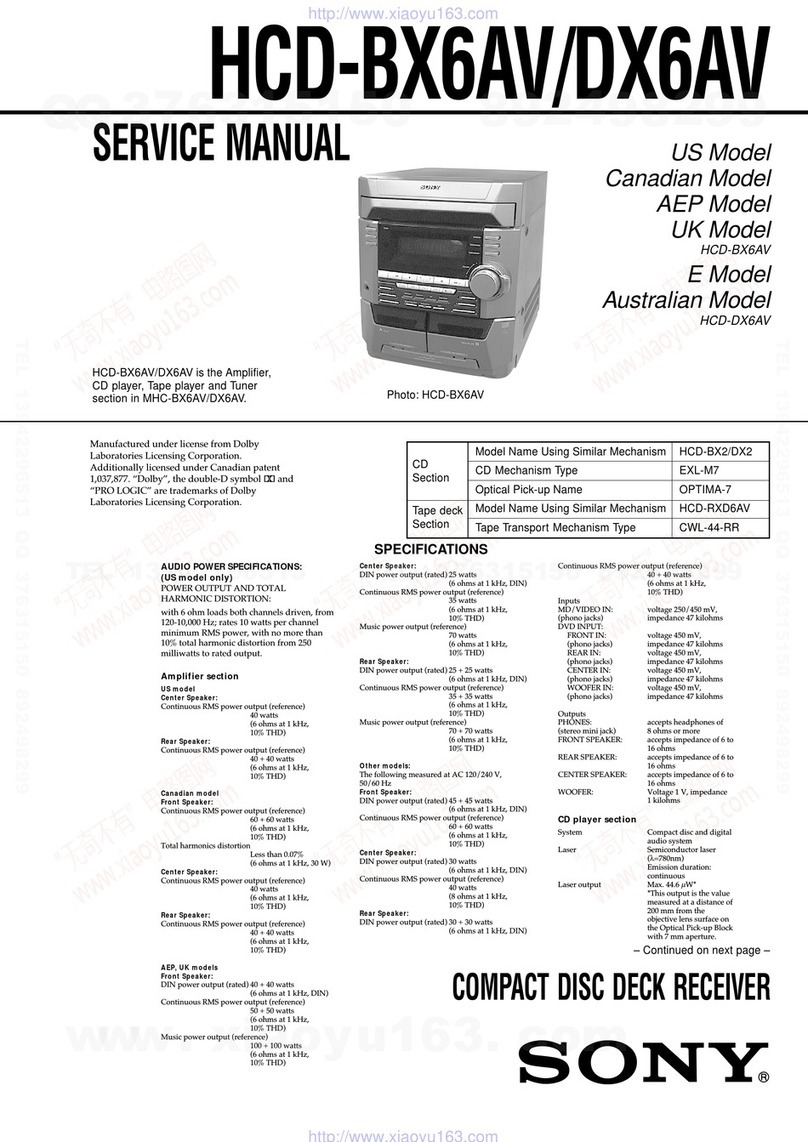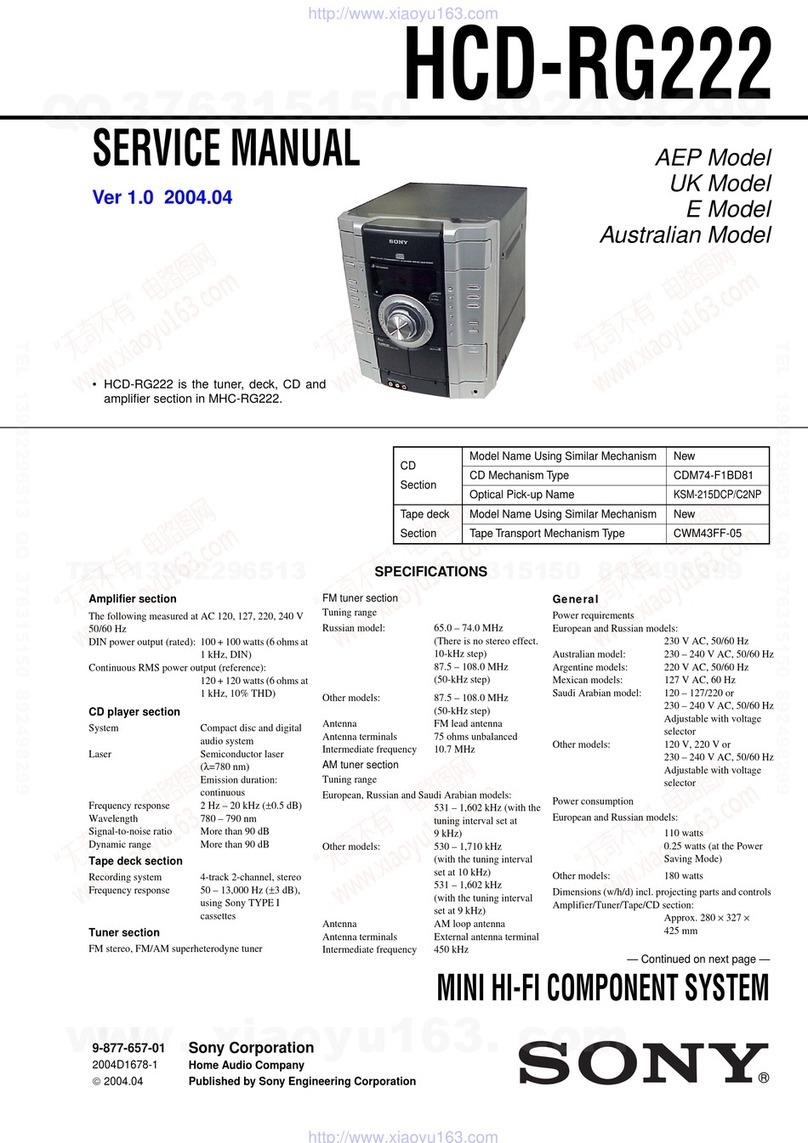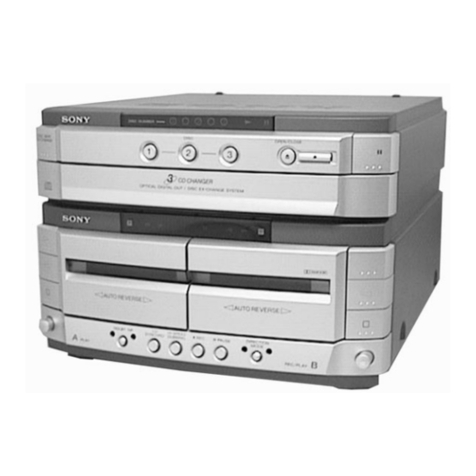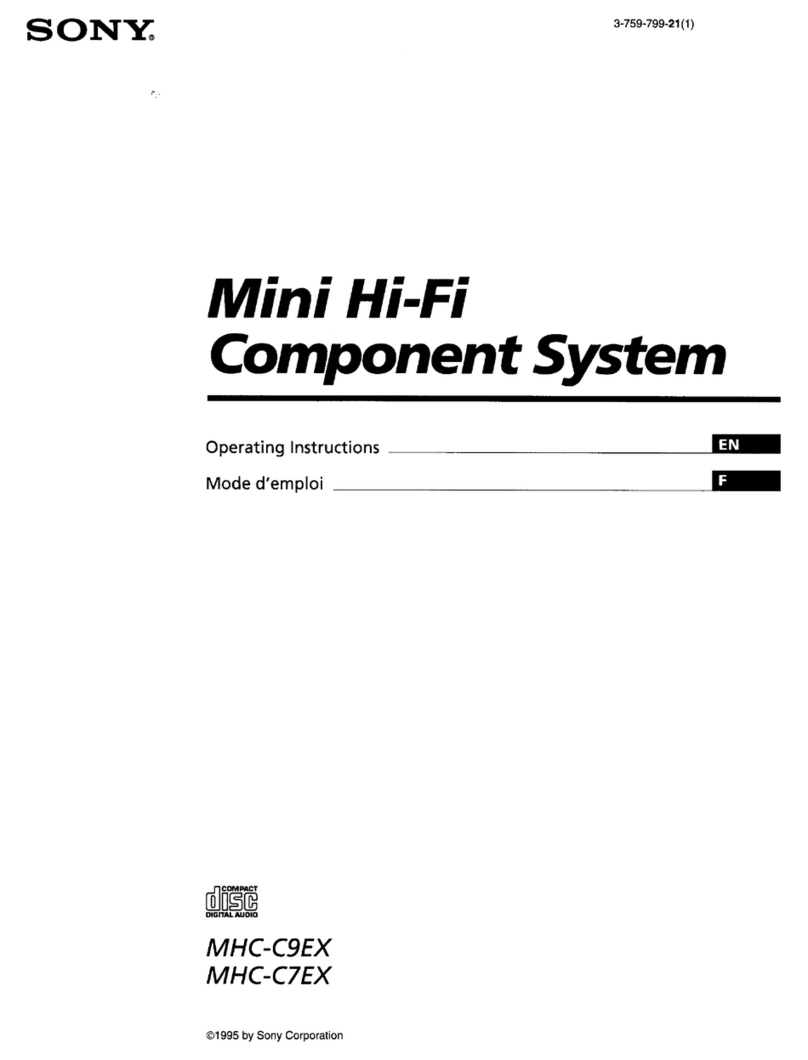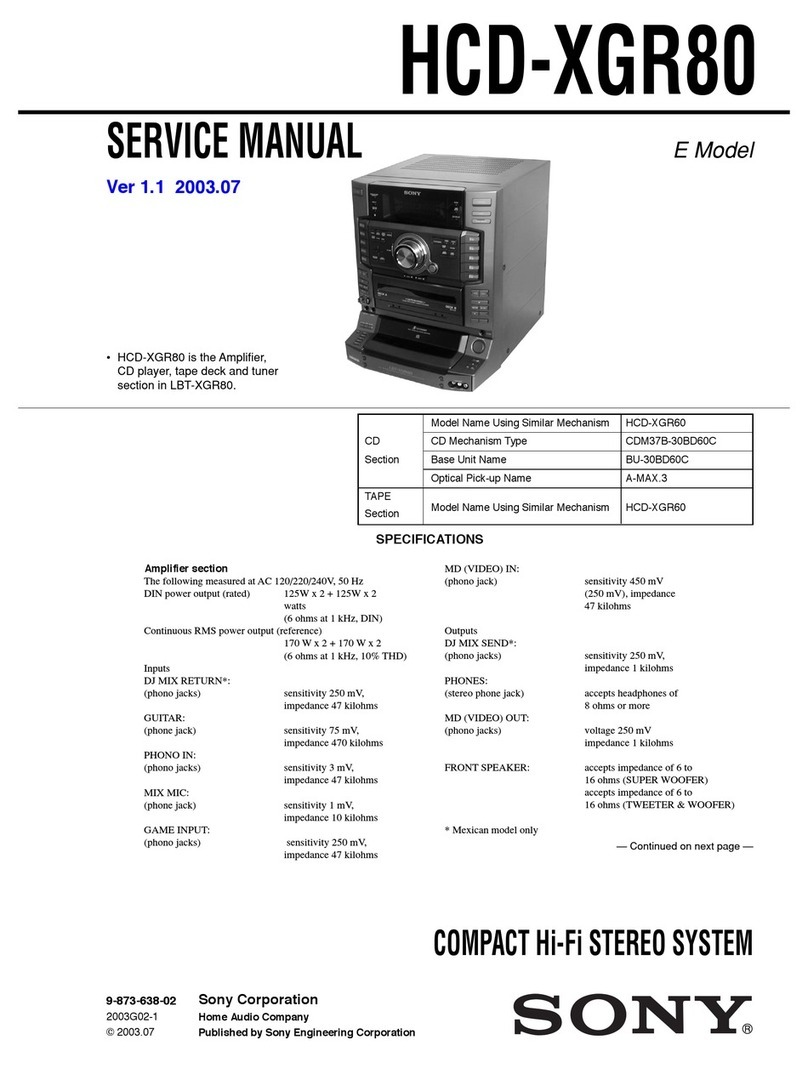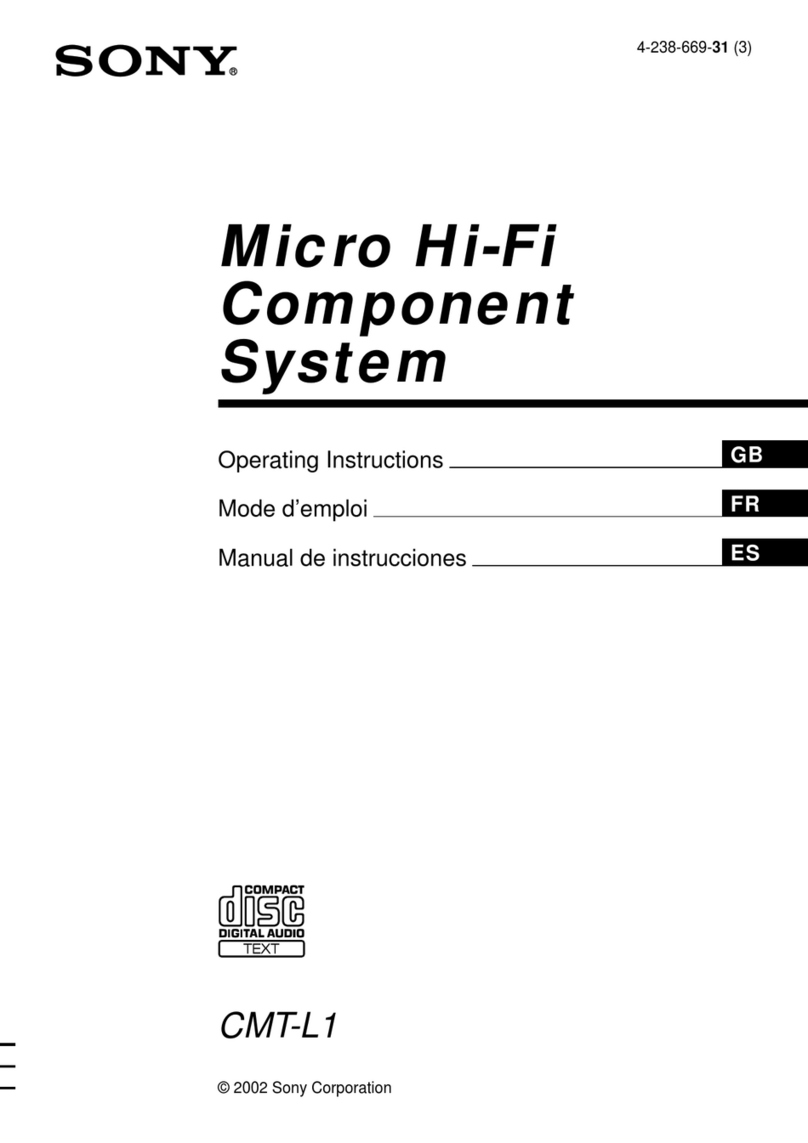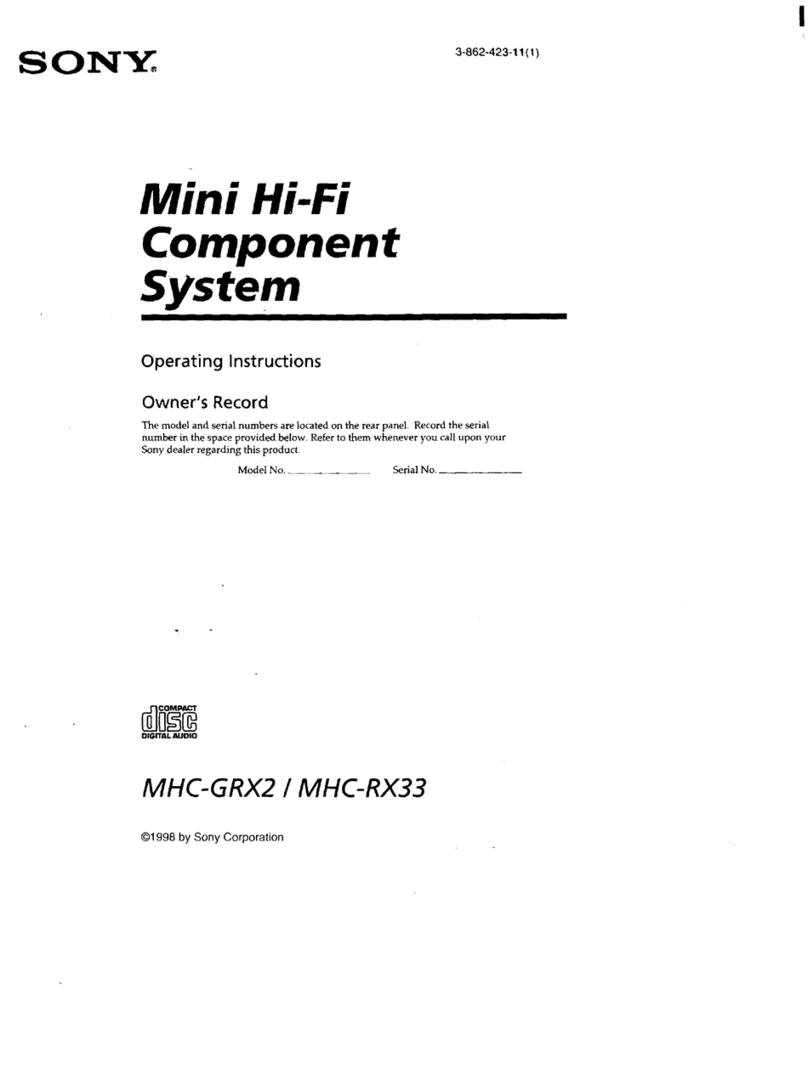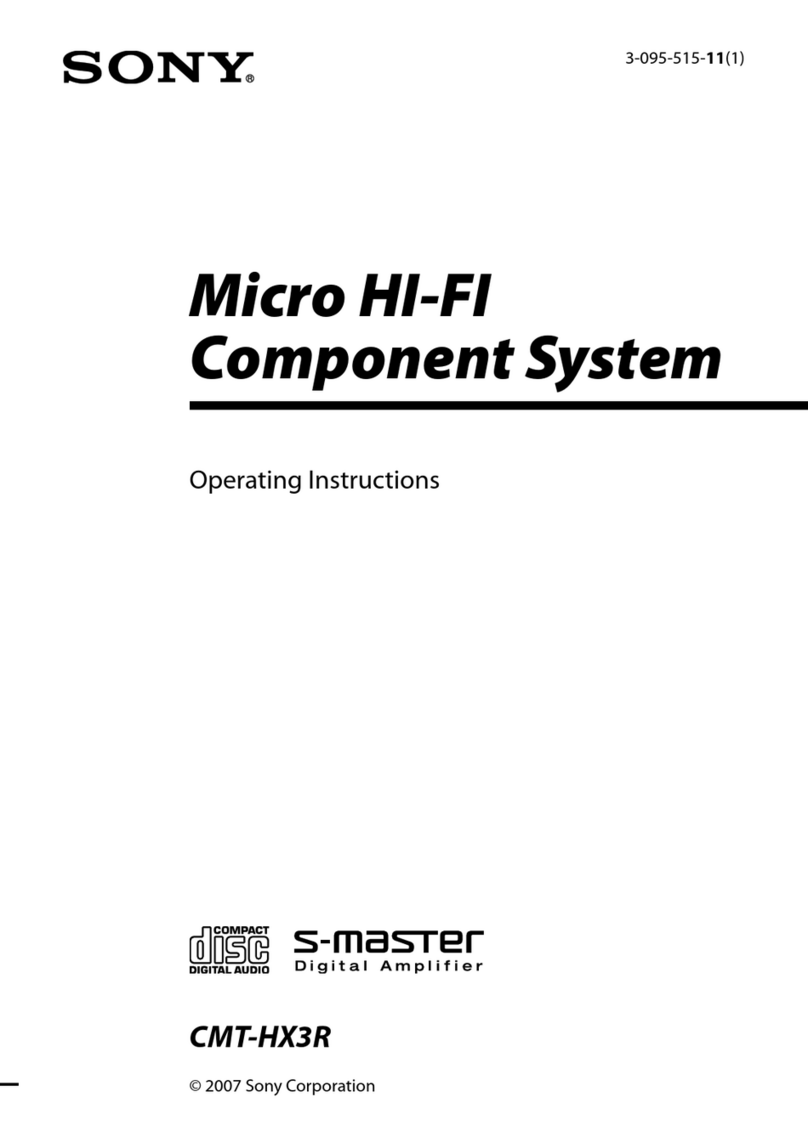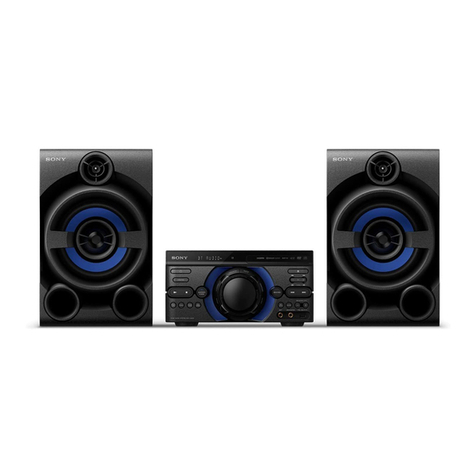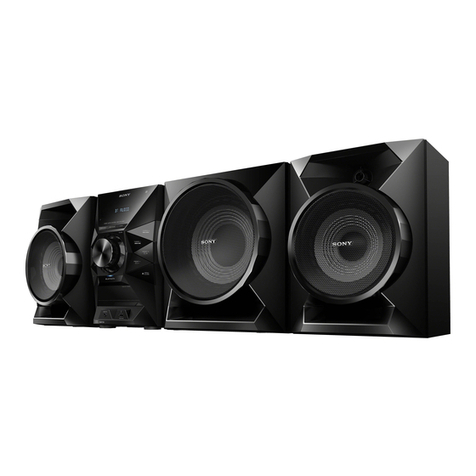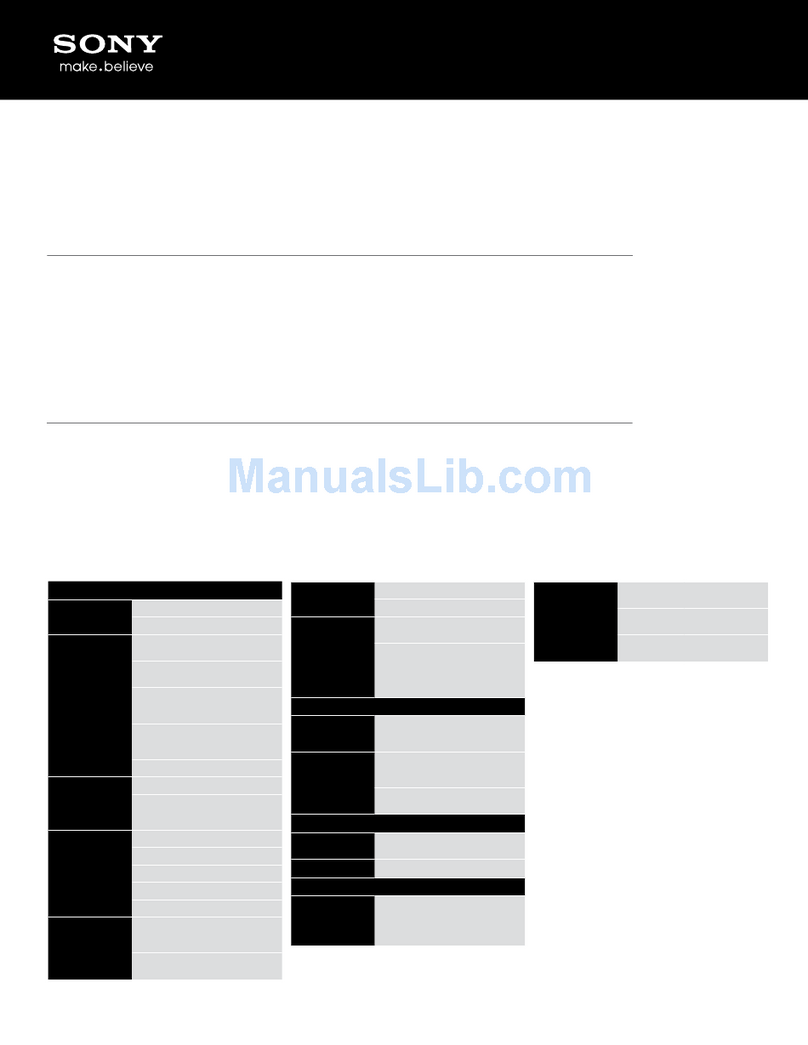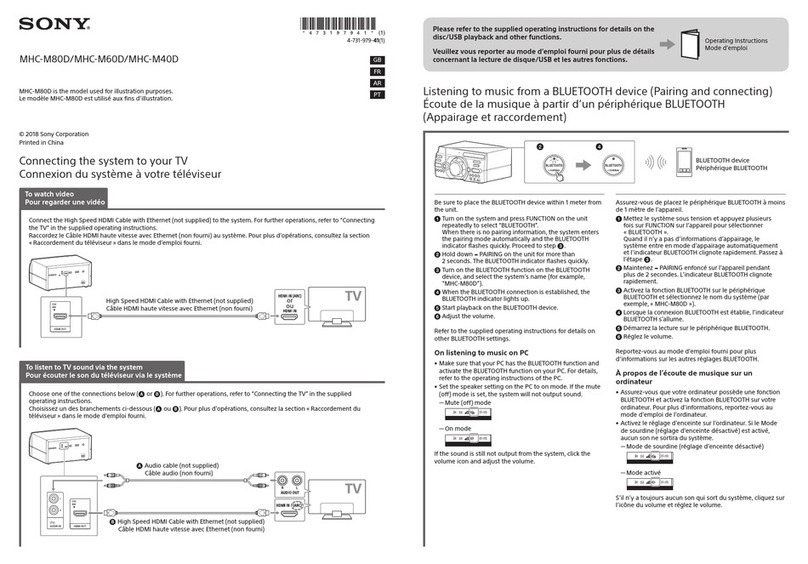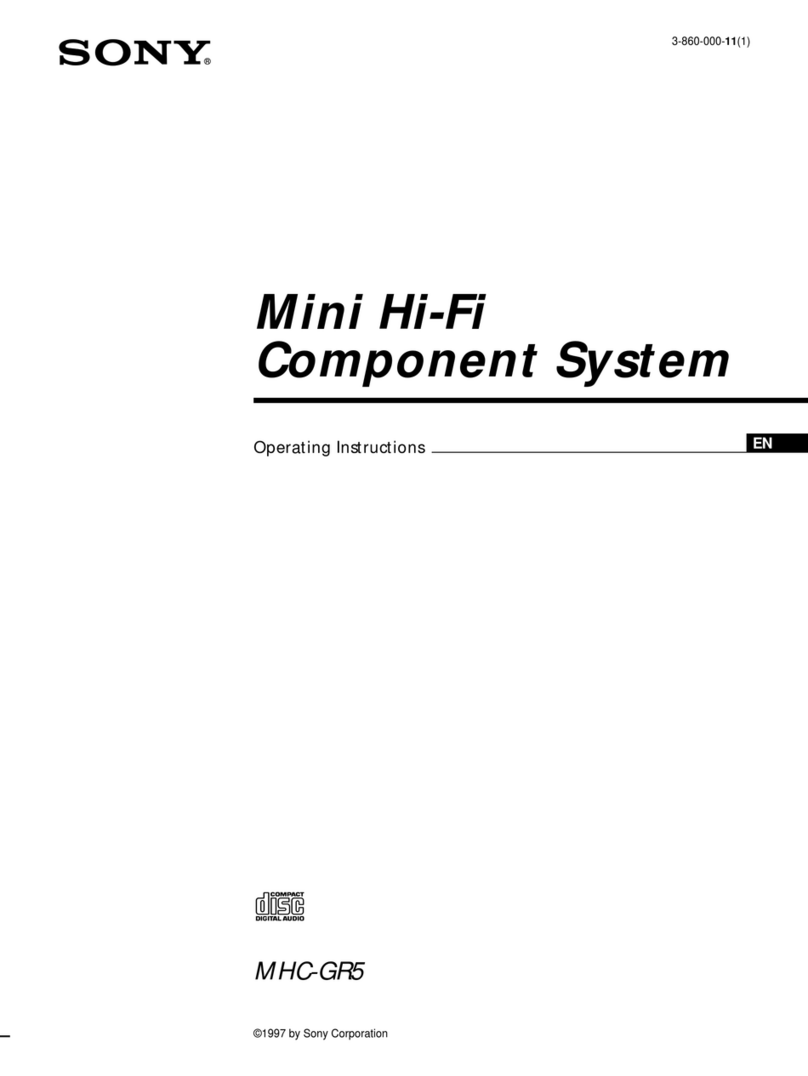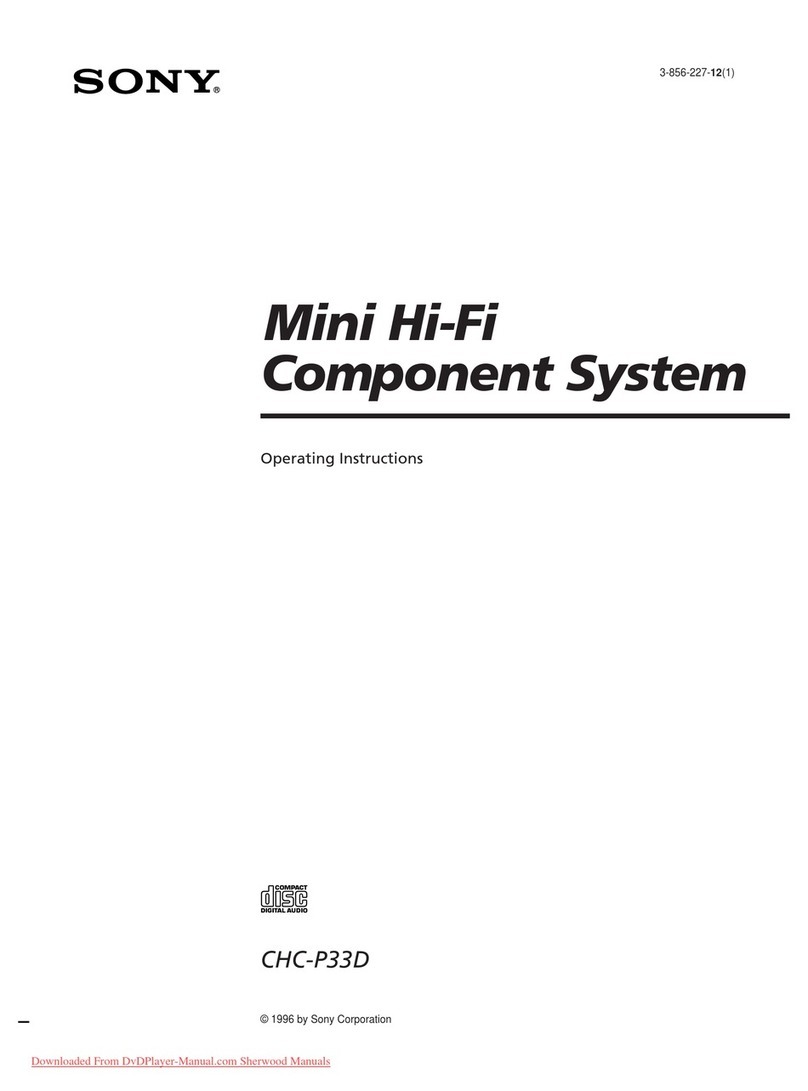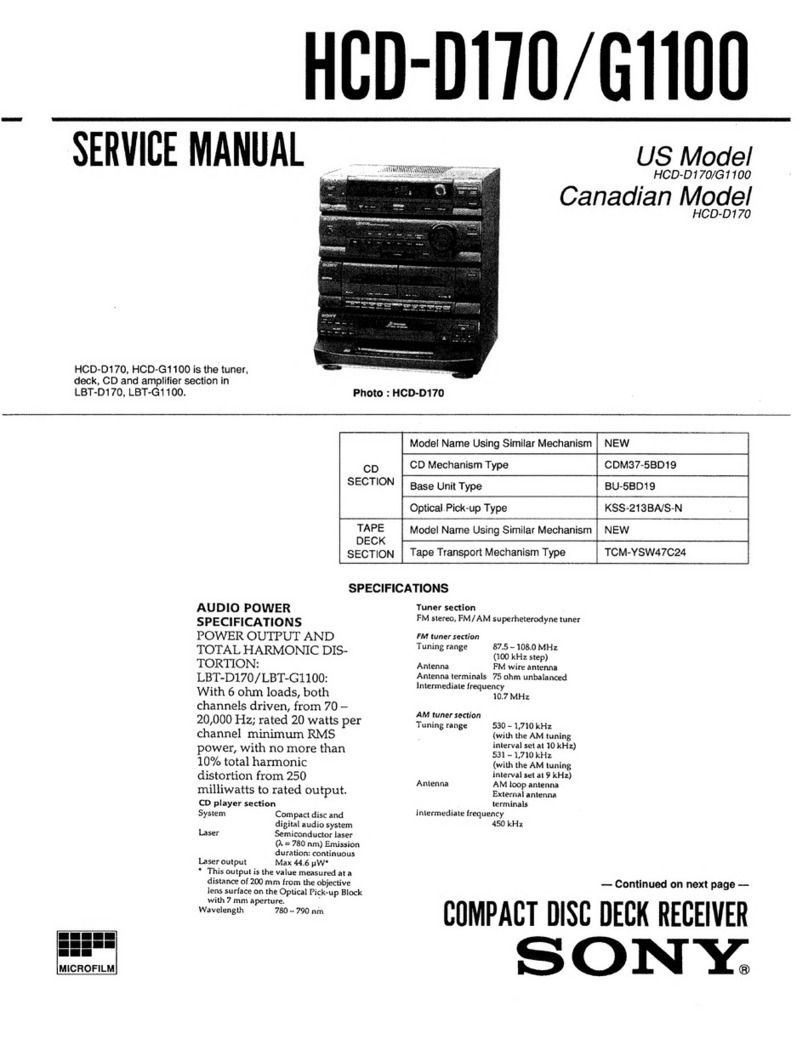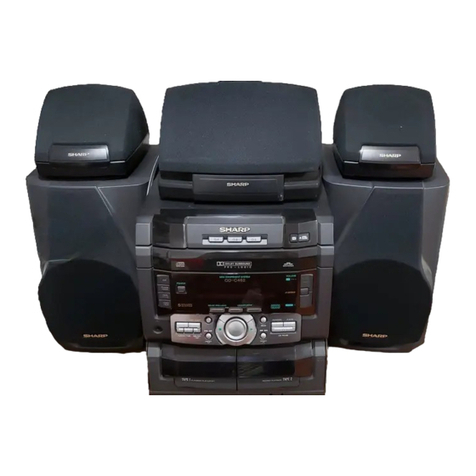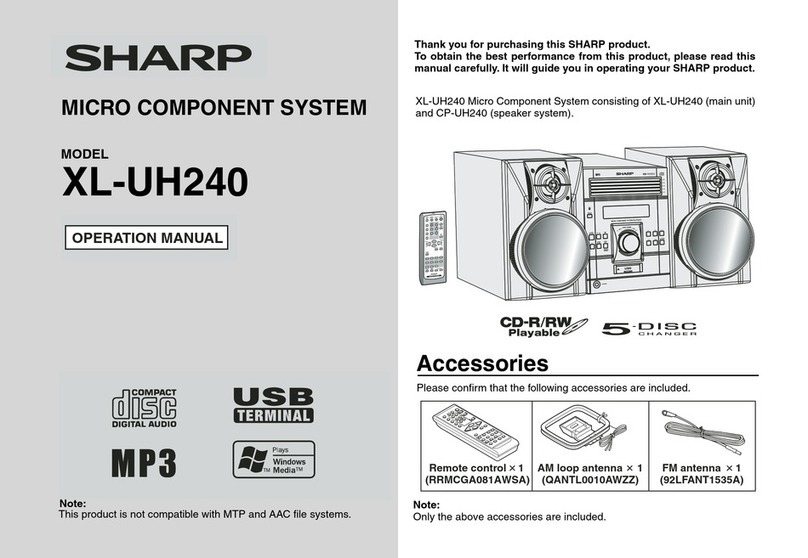5
TABLE OF CONTENTS
1. SERVICE NOTE
1-1. Service Position of CD Mechanism Deck........................... 6
1-2. Service Position of Amp Board........................................... 6
2. GENERAL
List of Button Locations and Reference Pages........................ 7
3. DISASSEMBLY
3-1. Case (Top) ......................................................................... 10
3-2. CD Door ............................................................................ 10
3-3. Front Panel Section ........................................................... 11
3-4. CD Mechanism Deck ........................................................ 11
3-5. Tape Mechanism Deck, Mic Board ................................... 12
3-6. Panel Board ....................................................................... 12
3-7. Back Panel Section, Sub Trans Board............................... 13
3-8. Trans Board ....................................................................... 13
3-9. Main Board ....................................................................... 14
3-10. Amp Board ........................................................................ 14
3-11. BD49 Board ...................................................................... 15
3-12. VCD Connect Board, VMP43GY Board .......................... 15
3-13. Driver Board, SW Board ................................................... 16
3-14. Optical Pick-up ................................................................. 16
3-15. Sensor Board ..................................................................... 17
3-16. Motor (TB) Board ............................................................. 17
3-17. Motor (LD) Board .............................................................18
4. TEST MODE ..................................................................... 19
5. ELECTRICAL ADJUSTMENTS................................. 23
6. DIAGRAMS
6-1. Circuit Boards Location .................................................... 25
6-2. Printed Wiring Board –CD Mechanism Section (1/2)– .... 28
6-3. Schematic Diagram –CD Mechanism Section (1/2)– ....... 29
6-4. Printed Wiring Boards –CD Mechanism Section (2/2)–... 30
6-5. Schematic Diagram –CD Mechanism Section (2/2)– ....... 31
6-6. Printed Wiring Board –VCD Connect Section–................ 32
6-7. Schematic Diagram –VCD Connect Section– .................. 32
6-8. Printed Wiring Board –VMP Section–.............................. 33
6-9. Schematic Diagram –VMP Section (1/2)–........................ 34
6-10. Schematic Diagram –VMP Section (2/2)–........................ 35
6-11. Schematic Diagram –Main Section (1/2)– ........................ 36
6-12. Schematic Diagram –Main Section (2/2)– ........................ 37
6-13. Printed Wiring Board –Main Section– ..............................38
6-14. Printed Wiring Boards –Panel Section– ............................ 39
6-15. Schematic Diagram –Panel Section (1/2)– ....................... 40
6-16. Schematic Diagram –Panel Section (2/2)– ....................... 41
6-17. Printed Wiring Boards –Jack Section–.............................. 42
6-18. Schematic Diagram –Jack Section– ..................................43
6-19. Printed Wiring Board
–Power Section (1/2) (HCD-RV22)– ................................ 44
6-20. Printed Wiring Boards
–Power Section (2/2) (HCD-RV22)– ................................ 45
6-21. Schematic Diagram –Power Section (HCD-RV22)– ........ 46
6-22. Schematic Diagram –Power Section (HCD-RV55)– ........ 47
6-23. Printed Wiring Board
–Power Section (1/2) (HCD-RV55)– ................................ 48
6-24. Printed Wiring Boards
–Power Section (2/2) (HCD-RV55)– ................................ 49
6-25. IC Block Diagrams............................................................ 50
7. EXPLODED VIEWS
7-1. Main Section ..................................................................... 60
7-2. Front Panel Section (1)...................................................... 61
7-3. Front Panel Section (2)...................................................... 62
7-4. Front Panel Section (3)...................................................... 63
7-5. Main Board Section .......................................................... 64
7-6. CD Mechanism Deck Section (1) ..................................... 65
7-7. CD Mechanism Deck Section (2) ..................................... 66
7-8. CD Mechanism Deck Section (3) ..................................... 67
7-9. Base Unit Section .............................................................. 68
8. ELECTRICAL PARTS LIST ........................................ 69
HCD-RV22/RV55
